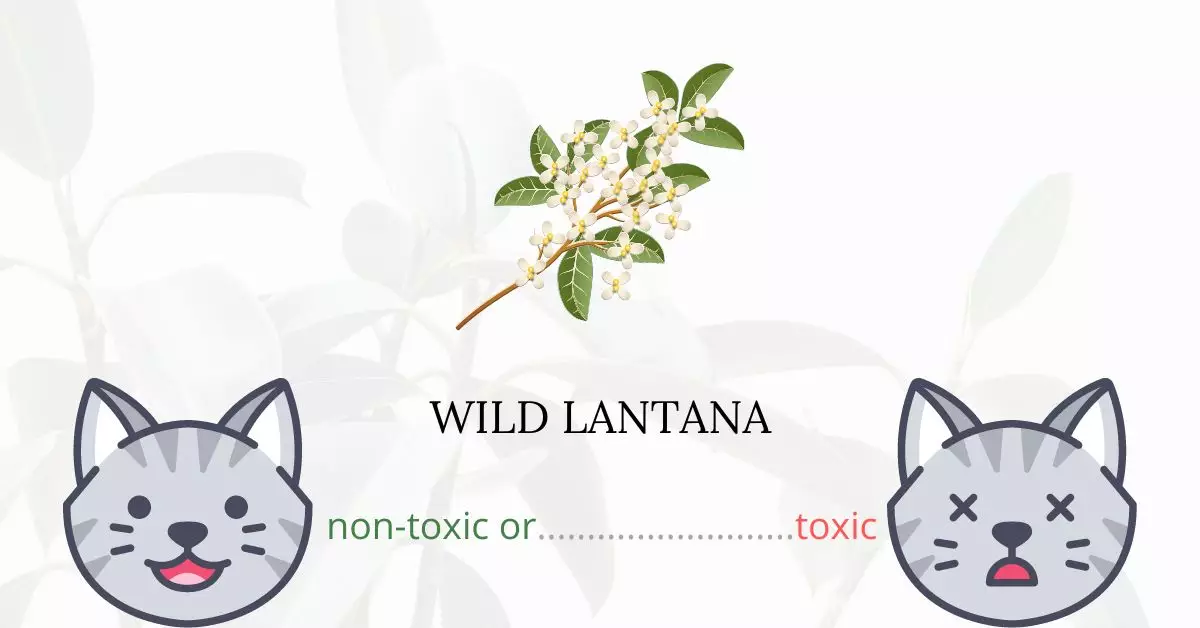Wild Lantana is not toxic to cats. However, it’s always advisable to prevent cats from consuming any plant, even if it’s deemed safe.
This article was meticulously written in collaboration with a team of experienced DVMs (Doctors of Veterinary Medicine). Their expertise ensures that we provide you with accurate and up-to-date information on the potential risks associated with various plants, especially concerning Wild Lantana, and their effects on our feline companions. Our research also includes references from high-authority websites such as ASPCA and PetMD.
It’s worth noting that while Wild Lantana is listed as non-toxic by the ASPCA, it’s best to always be cautious and supervise your pets around plants.
Can Cats Eat Wild Lantana?
Generally, cats are carnivores so they get their nutrition from protein-based food like meat. Although they sometimes have the urge to eat vegetables and plants because they need fiber, it is not advisable for cats to overeat plants.
Carnivores cannot properly digest plant materials because they lack the enzymes to do this process. That’s why cats suffer from indigestion if they have consumed too many plants. Among the signs of indigestion are vomiting and diarrhea.
What is Wild Lantana?
Scientifically known as Abronia fragrans, wild lantana is a herbaceous perennial with an erect or sprawling growth habit that can grow to a height of 8 to 40 inches. It originates from a taproot and has sticky, hairy stems that can reach lengths of up to 3.3 feet, depending on the variety.
The wild lantana’s habitat stretches from Northern Arizona to Western Texas and Oklahoma. It goes through north from the Rocky Mountain and Western Plains regions of the United States, and then south to Chihuahua, Mexico. It can be commonly found in loose, arid, sandy soils growing in prairies, plains, and savannas.
Wild lantana is also known for other names such as sweet sand-verbena, snowball sand-verbena, prairie snowball, and fragrant verbena. Due to its lovely blossoms and fragrance, as well as to draw butterflies, it is frequently grown in gardens. Its shape may be extremely tolerant of the sun and heat.
This plant is also used by the Native Americans of the Southwest as an appetite stimulant, a stomachache remedy, and a wash for cuts and insect bites.
Keeping Cats Away From Wild Lantana
Make your plants off-limits in the event that your cats have developed a renewed interest in them. Close off the garden or the area where your potted plants are if at all possible. It might also be a good idea to mount your plants directly on the wall, far from your cat’s reach.
By using plants that cats find unpleasant, you can deter them from visiting a particular spot in your home or garden. Generally speaking, cats avoid geraniums, marigolds, lavender, and rosemary. These are a surefire way to keep cats away from your plants in the garden.
Wrap aluminum foil around the soil. Cats will stay away from the plant because they dislike the scratching sound and feel of aluminum foil.
If you don’t want to use foil, you could also place some large decorative stones along the soil. This will also deter cats from tampering with the soil mixture.
Plants to Avoid For Your Cats
If you are a cat owner and unsure if the plants growing in your yard are harmful to your cats, check out this list of toxic plants for cats. You can also check our list of non-toxic plants for cats.





